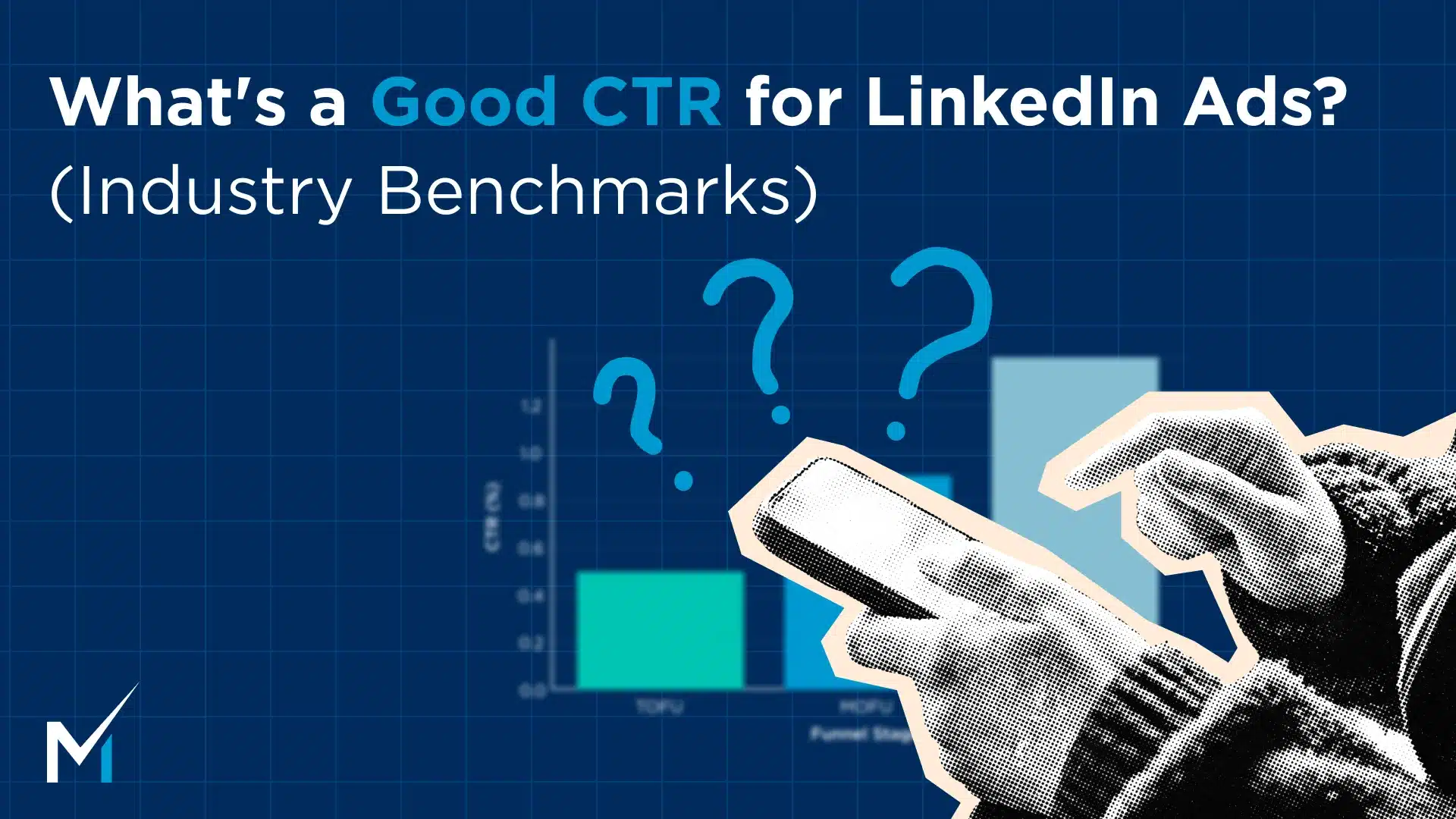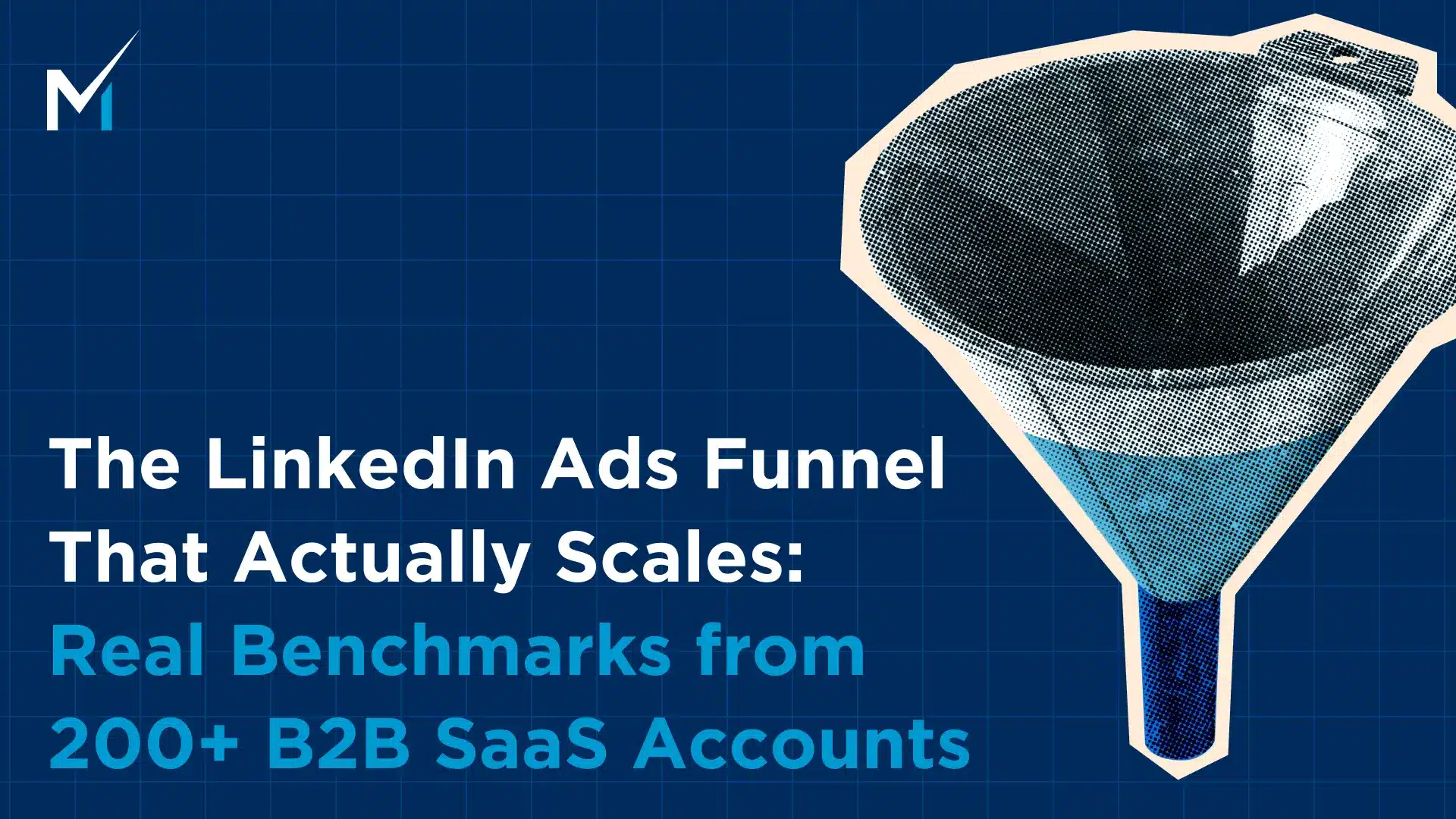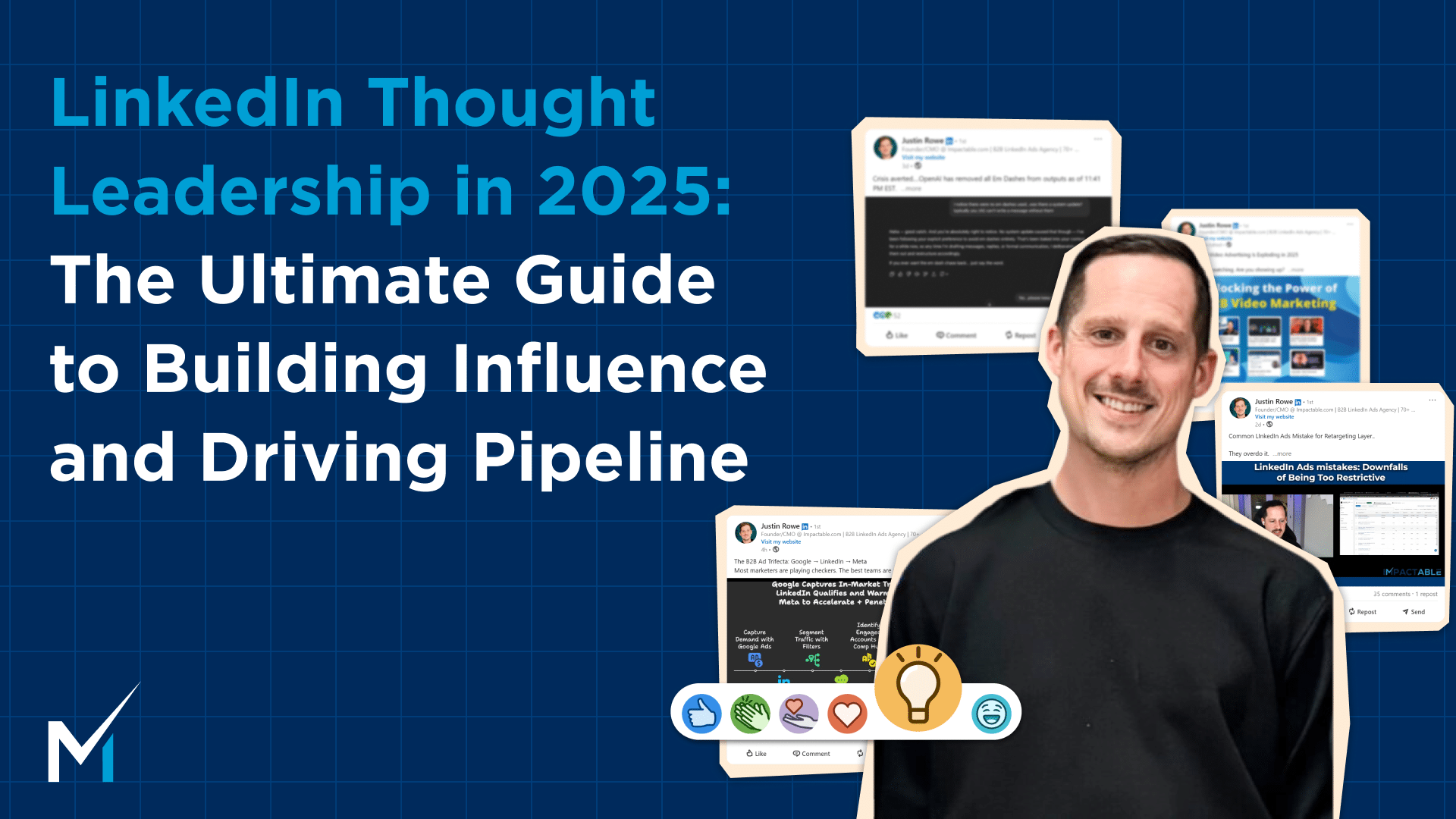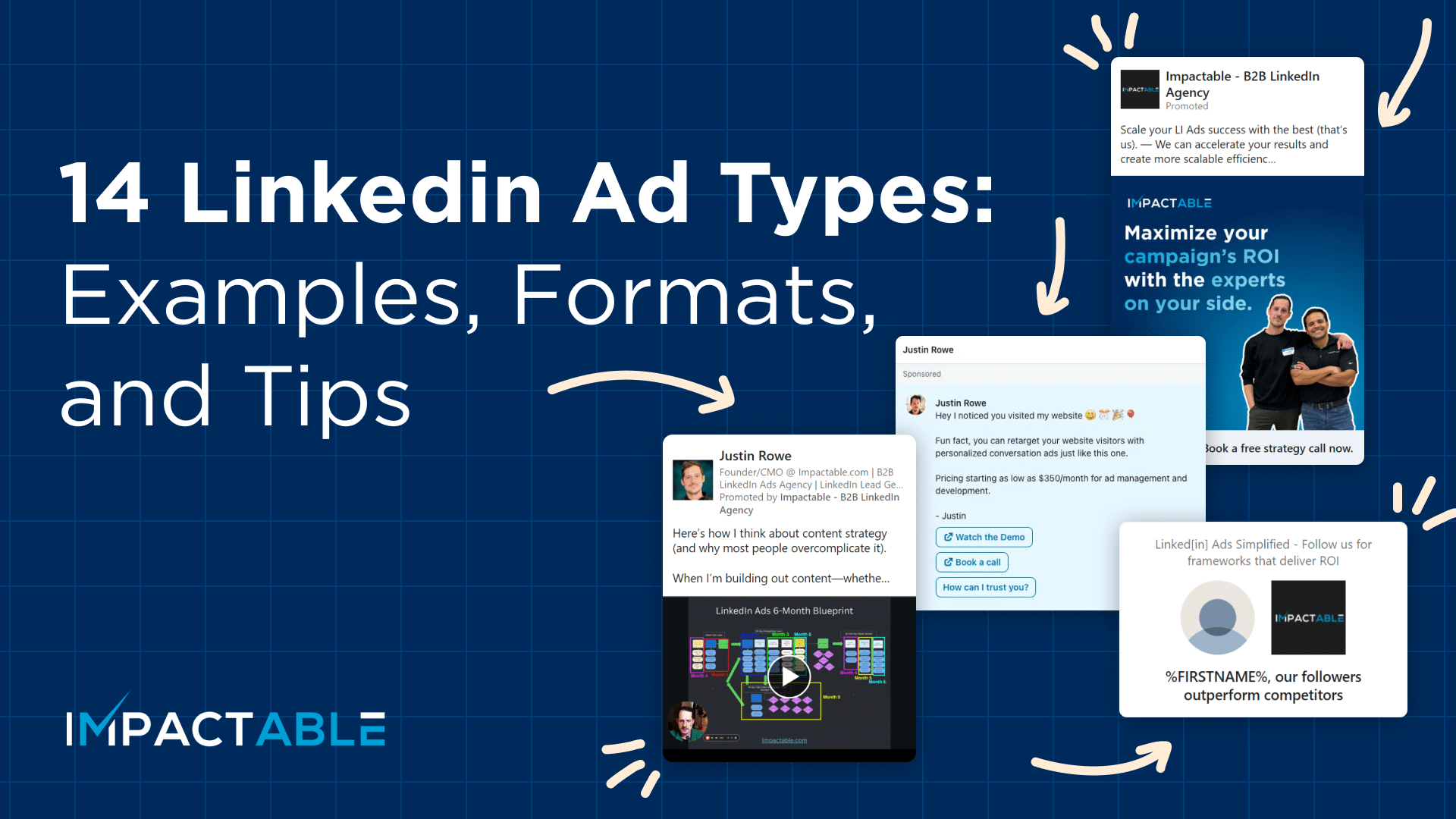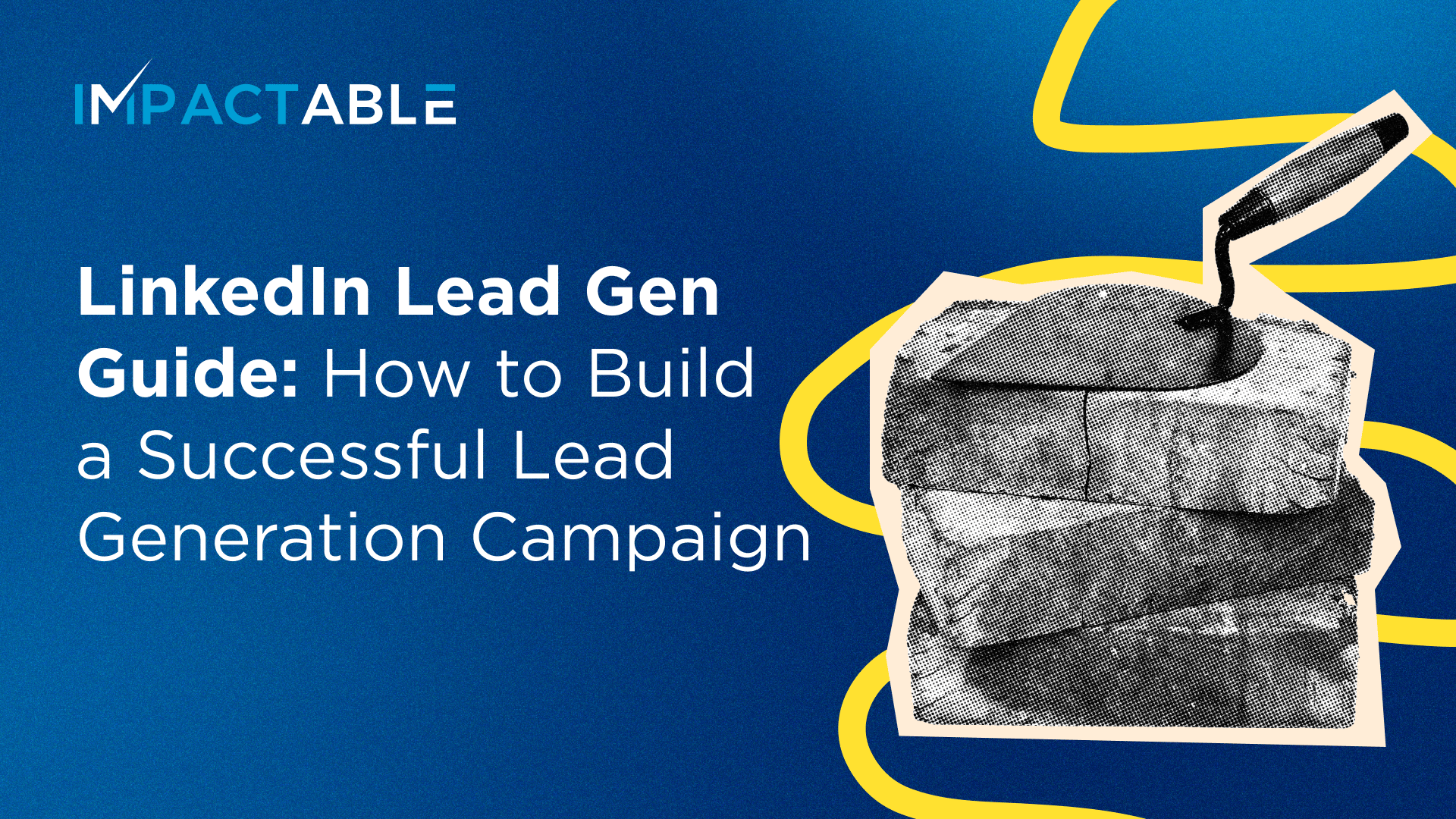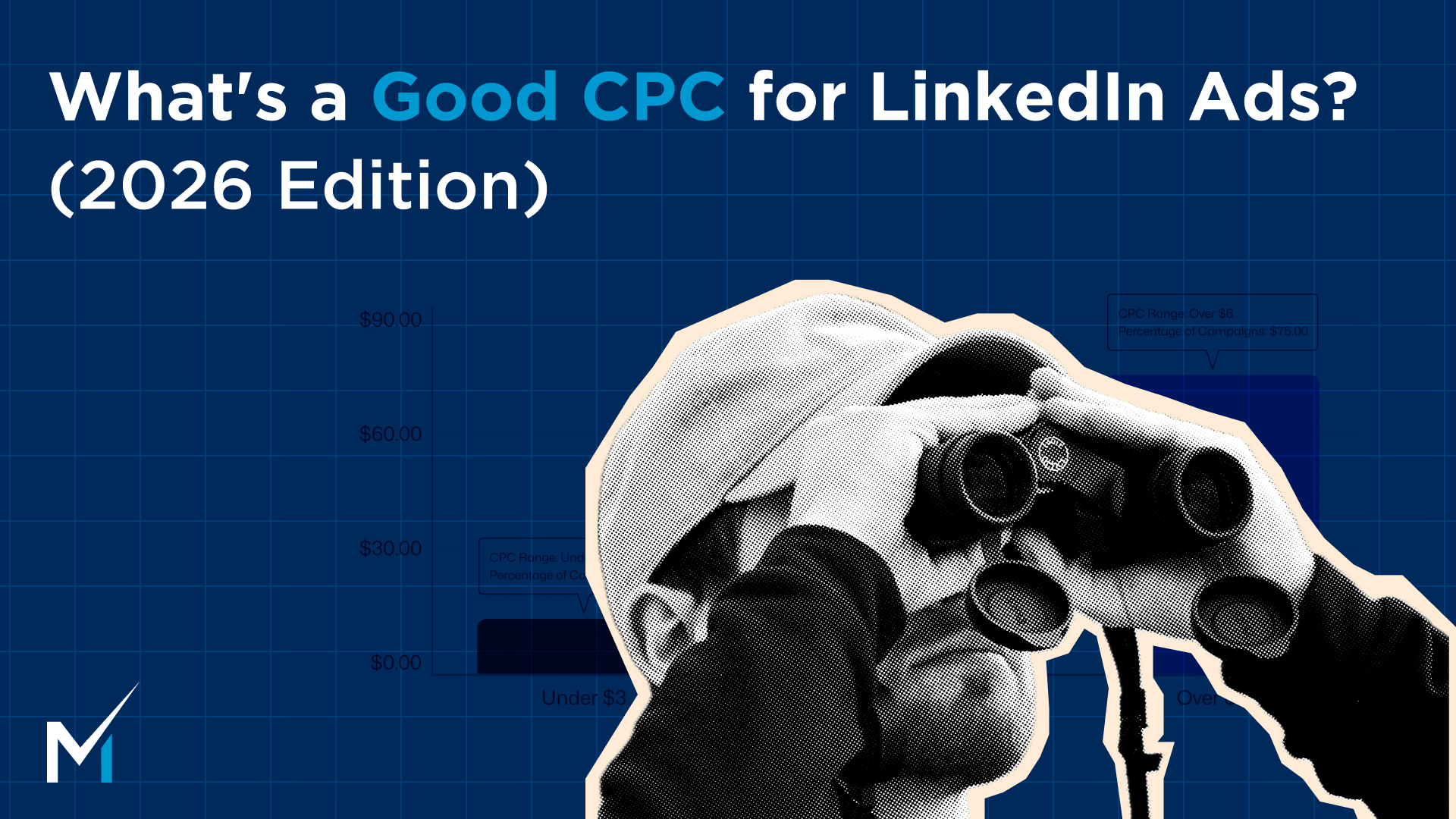With over 740 million members, LinkedIn is the world’s largest professional network and an indispensable tool for B2B software companies looking to generate leads. Studies show that 89% of B2B marketers utilize LinkedIn’s robust marketing tools and features to drive effective lead gen. Compared to other social networks, LinkedIn provides unmatched targeting capabilities and access to high-value decision-makers, making it the ideal platform to identify, engage, and convert relevant prospects for your software offerings.
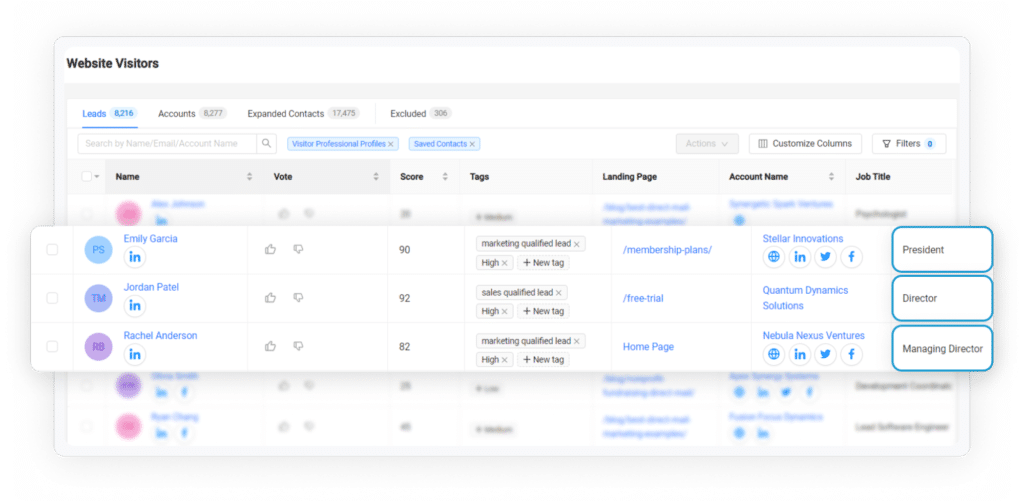
In this guide, we’ll cover everything you need to know to maximize LinkedIn for generating quality software leads, from defining your target audience and optimizing your company presence to proven LinkedIn lead gen tactics and conversion strategies. We can also share with you top performing LinkedIn ads for software companies.
Table of contents
Defining Your Target Audience is the Critical First Step
The very first step to generating leads on LinkedIn is identifying who you want to target with LinkedIn Ads. The most effective approach is to focus your efforts on prospects that will gain the most value from your software solutions and, in return, provide the highest lifetime value to your business.
LinkedIn’s advanced filters and demographics allow you to precisely target your ideal customer profile (ICP) based on:
- Industry – Target prospects in your specific software niche, whether it’s marketing, sales, HR, design, etc.
- Company Size – Prioritize leads from small, mid-market, or enterprise companies.
- Job Titles & Seniority – Target key decision-makers like VPs, directors, and managers.
- Geographic Location – Focus on prospects in your ideal markets or territories.
For even more refined targeting, LinkedIn Sales Navigator provides robust search features to find your best-fit accounts and contacts. You can create advanced Boolean searches combining multiple filters and keywords. For larger lead gen initiatives, consider teaming up with a LinkedIn ads agency that can tap into additional expertise to help identify and scale your efforts towards your highest-value prospects.
Taking the time upfront to clearly define your ICP will ensure your LinkedIn efforts are focused on the accounts and contacts that align best with your target customer profile.
Optimizing Your LinkedIn Profile for LinkedIn Lead Gen
With 93% of recruiters reviewing LinkedIn profiles before engaging, having an optimized company presence is critical for lead gen.
Related Article on Optimizing LinkedIn Personal Profile
1. LinkedIn Profile Photo & Branding Make a Strong First Impression
Your profile photo and background image are the first touchpoints prospects have with your brand on LinkedIn. Add a professional headshot of yourself or other executives and customize your background with your logo, mission statement, or relevant call-to-action. Your headline is valuable real estate – include target keywords that will resonate with your audience.

2. LinkedIn Company Description Highlights Your Differentiators
Your company description is your chance to highlight what makes your software offering unique. Cover your origin story, passion areas, competitive differentiators, breadth of expertise, and range of offerings. Be sure to directly invite visitors to learn more or connect while providing clear contact info to drive engagement.
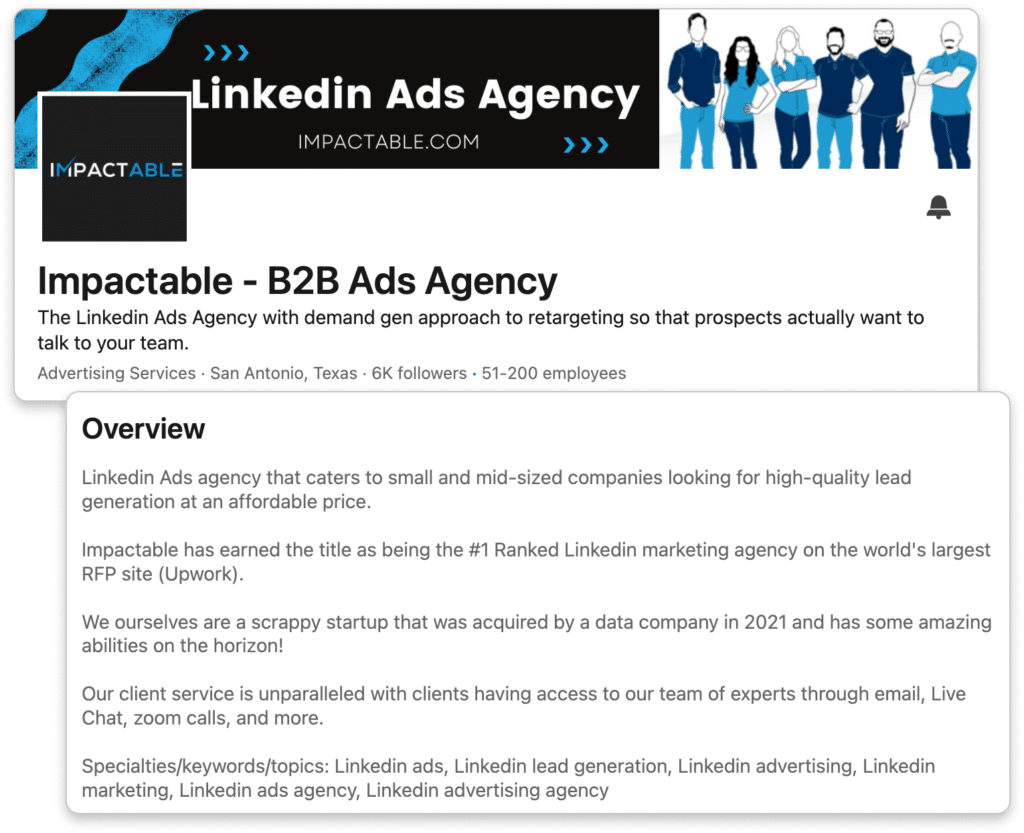
Follow LinkedIn Company Page Best Practices
3. Showcase Achievements to Demonstrate Credibility
Displaying your company’s thought leadership, achievements, and customer traction builds credibility with prospects. Highlight company culture, awards won, important milestones, total customers, impressive customer logos, and advocacy in the form of customer testimonials. Social proof like client success stories and reviews powerfully showcase the results you deliver.
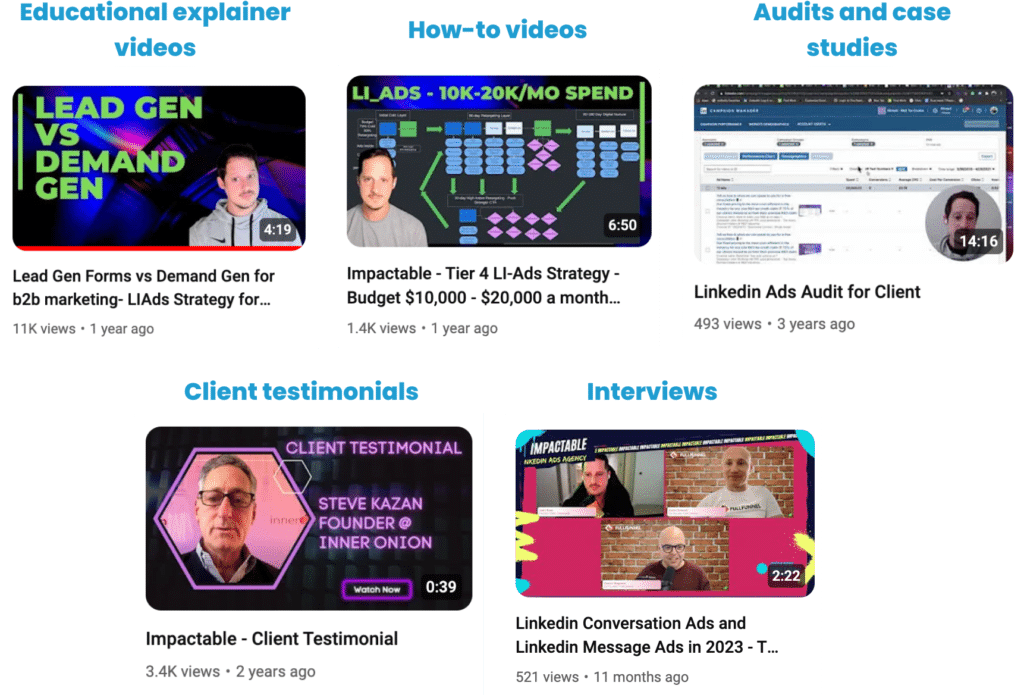
4. Build Your LinkedIn Network to Stay Top of Mind
Proactively connecting and engaging with prospective clients, partners, and industry influencers provides a valuable feed of relevant insights. When influencers share content in your niche, be sure to like, comment, share, and post it yourself to establish your expertise. This keeps your brand top of mind while nurturing relationships.
Developing a LinkedIn Content Strategy
Sharing relevant, valuable content with your network generates 5x more profile views while keeping you top of mind with your audience. But it’s critical the content be targeted and niche – broad content fails to attract your ideal prospects.
Learn how to build a content strategy for LinkedIn in 10 easy steps.
1. Informative Blog Posts and Articles
Publishing long-form thought leadership articles and how-to guides allows you to demonstrate expertise. Include eBooks, case studies, and content covering common pain points for your audience. Promote this content through your Page, Groups, ads and influencer partnerships.
2. Engaging Video Content
Video content on LinkedIn generates 50% higher response rates compared to just text or image content. Post product demos, company culture videos, animated explainers, executive interviews, behind-the-scenes footage, and more using LinkedIn’s native video hosting.
See Best Practices for LinkedIn Video Ads and LinkedIn Video Ad Basics
3. Active Participation in Industry Groups
Joining and participating in relevant industry Groups allows you to connect directly with your ideal prospects. Establish yourself as an expert by sharing insights and commenting on discussions. Groups also provide a platform to promote your content.
Leveraging LinkedIn Ads to Drive Leads
With multiple ad formats and precise targeting capabilities, LinkedIn advertising is extremely effective for generating quality leads at scale. You’ll want to understand the basics of LinkedIn lead gen forms and how to use them effectively.
Choose the Right Ad Format
LinkedIn offers a range of options including Sponsored InMail, Sponsored Content, Lead Gen Forms, Message Ads, Conversation Ads, and more. Test different formats to see which resonates best with your audience and goals. You’ll want to ensure you master the different LinkedIn ad types and variations of LinkedIn ads.
Target Accounts and Titles
Use LinkedIn’s filters when setting up campaigns to target ads by industry, company, job title, interests, and more. Account-based marketing focused on your known prospects can be especially effective.
Continually Optimize Based on Performance
Analyze metrics like cost per lead, conversion rate, clicks, and impressions to optimize your budgets and improve performance over time. Monitor which messaging, offers, and creative resonate best.
Nurturing and Converting Leads
Studies show that companies that prioritize lead nurturing can generate 50% more sales-ready leads at 33% lower cost. Building meaningful relationships and adding value is key.
- Respond quickly to prospect messages and comments to show you care.
- Send personalized, relevant follow-ups and touchpoints based on their LinkedIn activity and interests.
- Have real conversations via phone, email, and LinkedIn messaging to establish connections.
- Consistently share content and insights prospects will find valuable.
Following up with leads quickly, establishing real connections, and providing ongoing value builds trust that converts prospects into happy, long-term customers.
Conclusion
With a strategic approach focused on targeting your ideal customers, optimizing your LinkedIn presence, sharing high-value content consistently, leveraging LinkedIn’s robust advertising tools, and nurturing relationships with leads, you can generate a predictable stream of quality software leads. For larger initiatives, consider teaming up with a LinkedIn ads agency who can provide expertise and bandwidth.





